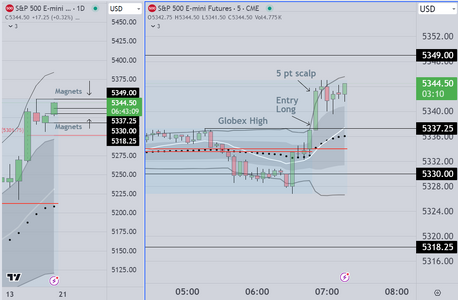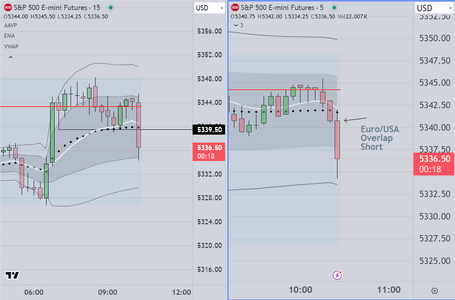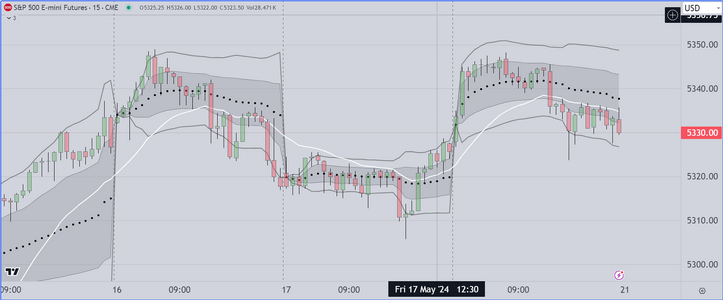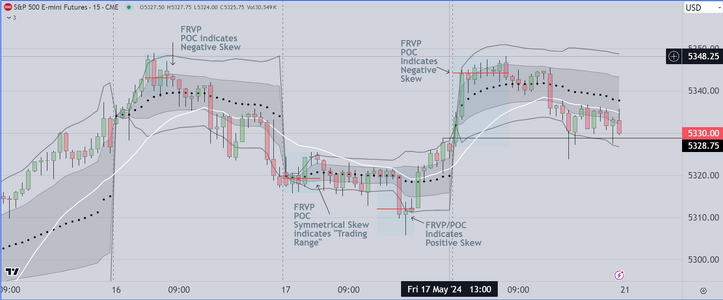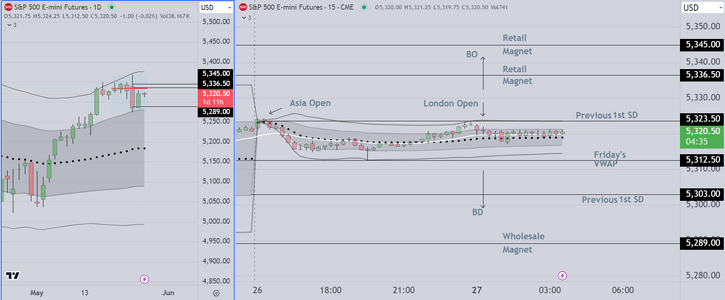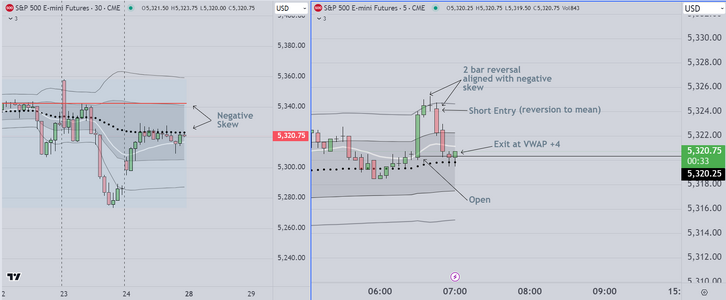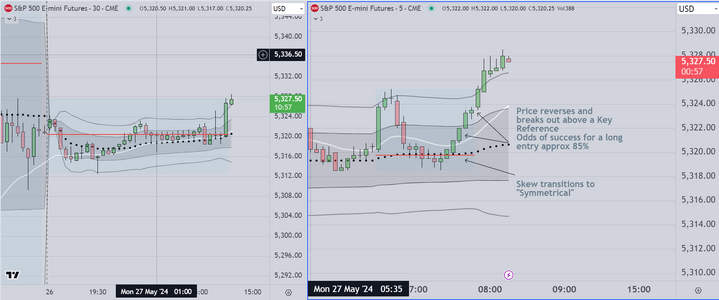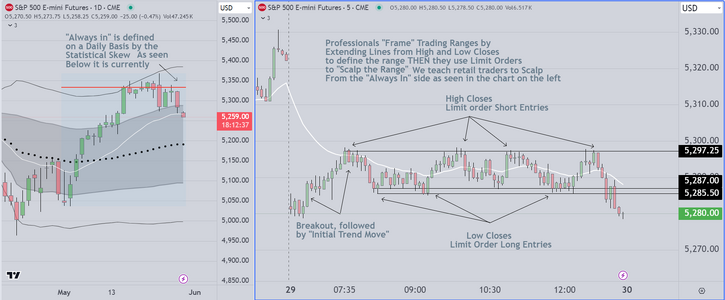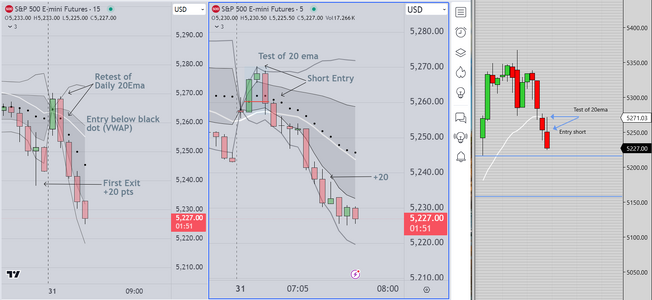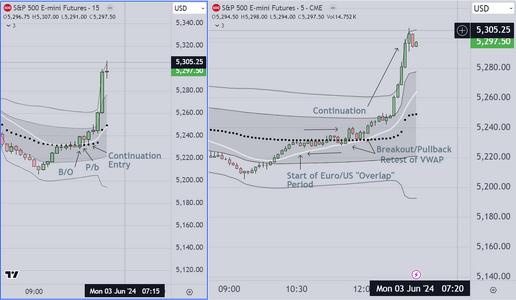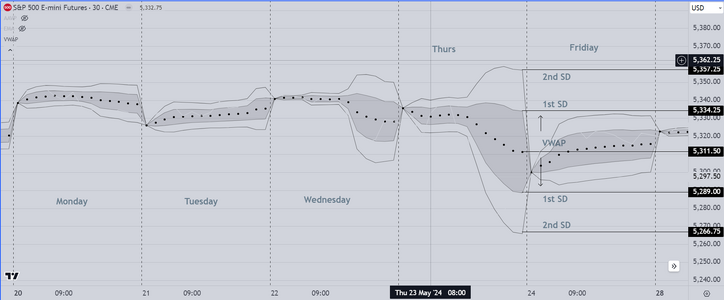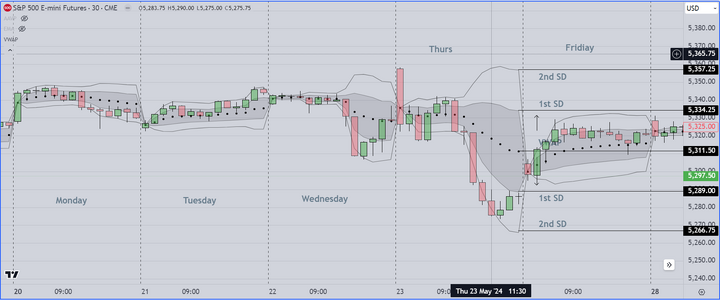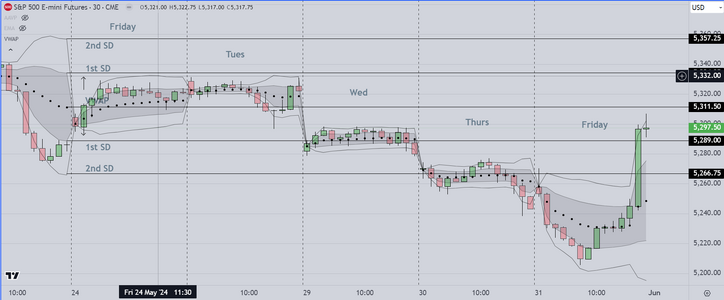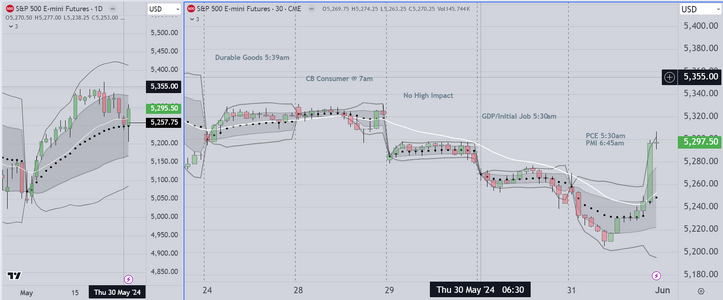Today's open and first trade entry
As seen in the chart, the market gapped up
and ran. This would have been easier for retail traders
to see using 15 min candles
The problem for retail traders is that because they lack
experience, they do not know that a close above the 1st SD
confirms the breakout
As a result they are "trapped out". This means that instead of
recognizing the breakout and entering AT the next bar's open
they often chase the market, thus exposing themselves to
unnecessary risk. Also because they trade "for ticks", they almost
always do not hold long enough to take a "full scalp" (in this market
a full scalp is 3-5 points). Failure to hold means that when they do lose
on a later trade, they usually cannot overcome losses on the longer
(and more important) time frame. Thus they are net losers. This is an
important lesson that eventually they have to learn if they are going
to make a living in this business
A Final Note
I had several traders watching me today and they suggested that it was
difficult to "pull the trigger" on this trade setup. In response I said
"Okay then, lets review. Please remember that (at the time) I suggested
that this was a low probability setup, a little over 60% odds ordinarily
however the context is as follows,
The open is the time when highest volatility exists in the market as
institutions make decisions to put money to work. This is when THEY
need to see range expansion in order to make a reasonable profit
So the real odds are much better then one might expect, and in my
opinion it was worth it to take this trade, even though it is early
and we will likely have many other opportunities later.
Should have also mentioned that in the pre-open comment
we suggested that the overall bias was up. If you have our
standard display in front of you, you will note that the daily
chart shows this, as well as the upside magnets
Traded perfectly it was a 7pt winner, I took 5 pts (a standard scalp)
If I were wrong, I would have taken a 2 or 3 pt loss. in these circumstances
I suggest traders enter on small size and hold
Good luck traders
As seen in the chart, the market gapped up
and ran. This would have been easier for retail traders
to see using 15 min candles
The problem for retail traders is that because they lack
experience, they do not know that a close above the 1st SD
confirms the breakout
As a result they are "trapped out". This means that instead of
recognizing the breakout and entering AT the next bar's open
they often chase the market, thus exposing themselves to
unnecessary risk. Also because they trade "for ticks", they almost
always do not hold long enough to take a "full scalp" (in this market
a full scalp is 3-5 points). Failure to hold means that when they do lose
on a later trade, they usually cannot overcome losses on the longer
(and more important) time frame. Thus they are net losers. This is an
important lesson that eventually they have to learn if they are going
to make a living in this business
A Final Note
I had several traders watching me today and they suggested that it was
difficult to "pull the trigger" on this trade setup. In response I said
"Okay then, lets review. Please remember that (at the time) I suggested
that this was a low probability setup, a little over 60% odds ordinarily
however the context is as follows,
The open is the time when highest volatility exists in the market as
institutions make decisions to put money to work. This is when THEY
need to see range expansion in order to make a reasonable profit
So the real odds are much better then one might expect, and in my
opinion it was worth it to take this trade, even though it is early
and we will likely have many other opportunities later.
Should have also mentioned that in the pre-open comment
we suggested that the overall bias was up. If you have our
standard display in front of you, you will note that the daily
chart shows this, as well as the upside magnets
Traded perfectly it was a 7pt winner, I took 5 pts (a standard scalp)
If I were wrong, I would have taken a 2 or 3 pt loss. in these circumstances
I suggest traders enter on small size and hold
Good luck traders
Attachments
Last edited:

